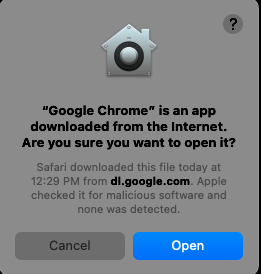Hello and welcome! Here are some links to help navigate this tutorial:
· Downloading and Installing Google Chrome· Check If You Already Have Google Chrome
· Glossary of Terms With Which You May be Unfamiliar
If further assistance is required, please contact airs@upei.ca.
Key Terms
Browser: A program you use to browse the internet.
Desktop: Your computer's main interface (i.e., screen). Some program short-cut icons may be displayed here.
Dialogue Box: A window that asks for user input.
Double-click: A single click is when you click the left button of your mouse or trackpad. A double-click is when you click the left button of your mouse or trackpad twice in quick succession as illustrated below.
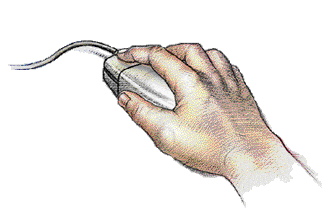
Drag and drop: If you click and hold a program icon with the left button of your mouse or trackpad, you can move it with your cursor, then place it somewhere else by releasing the mouse or trackpad button.
Finder: A program that gives you access to a searchable index of all the files on your computer.
Icon: An image used to represent a program. See Google Chrome's icon below.
Search Box: You can enter the information you wish to search for in these boxes. There are search boxes to search for files on your computer, and there are also search boxes to search for websites on the internet.
Taskbar: The bar at the bottom of your desktop where program icons can be pinned. The Finder icon can be seen here on the far left. It looks like a square face.
Check If You Already Have Google Chrome
Reminder: Refer to the Key Terms section if you come across terminology with which you are unfamiliar.
If you already have the Google Chrome browser, there are a number of places where you can access it. To open Google Chrome, simply double-click its icon, which looks like this:
-
A Google Chrome shortcut might be on your desktop. See below.

-
Google Chrome might be pinned to your taskbar. See below.

-
Or you may search for Google Chrome using Finder's search box. Chrome will be in your Applications folder. See below.

Downloading Googlechrome.dmg and Installing Google Chrome
Reminder: Refer to the Key Terms section if you come across terminology with which you are unfamiliar.
If you don't already have the Google Chrome browser, you may download its installation file using a browser that is already installed on your computer such as Mozilla Firefox, Apple Safari, or Microsoft Edge. Their icons look like this:
 |
 |
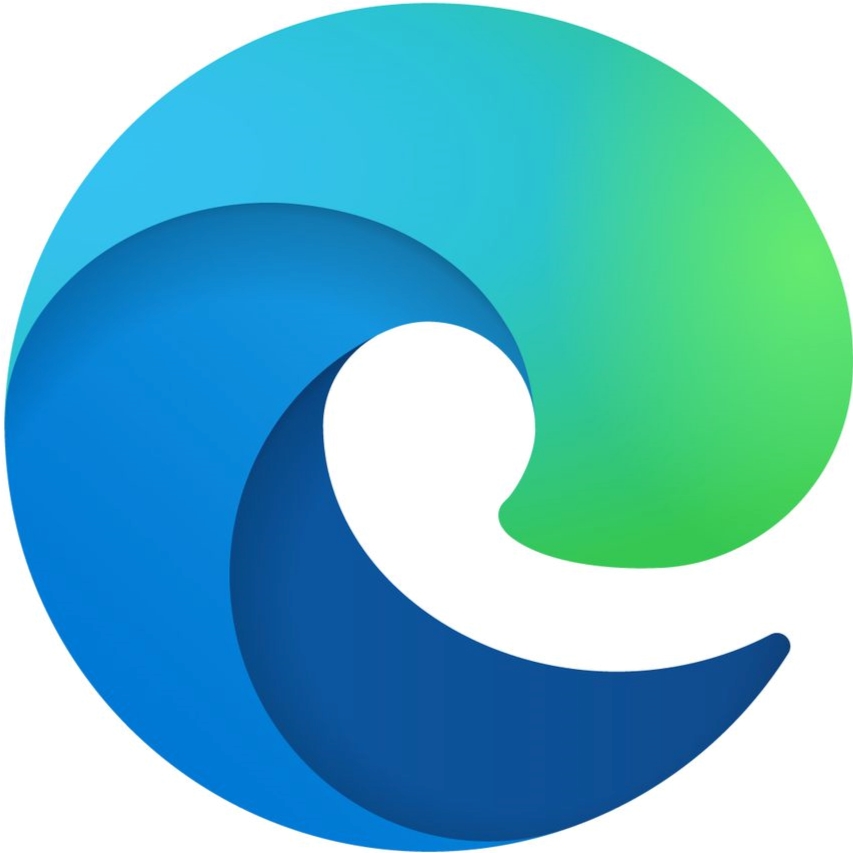 |
Here are step-by-step instructions for downloading Google Chrome's installation file and installing Google Chrome:
-
Open a browser and type https://www.google.com/chrome/ in its search box and press the enter key on your keyboard while your cursor is still flashing inside the search box. The following webpage will appear.
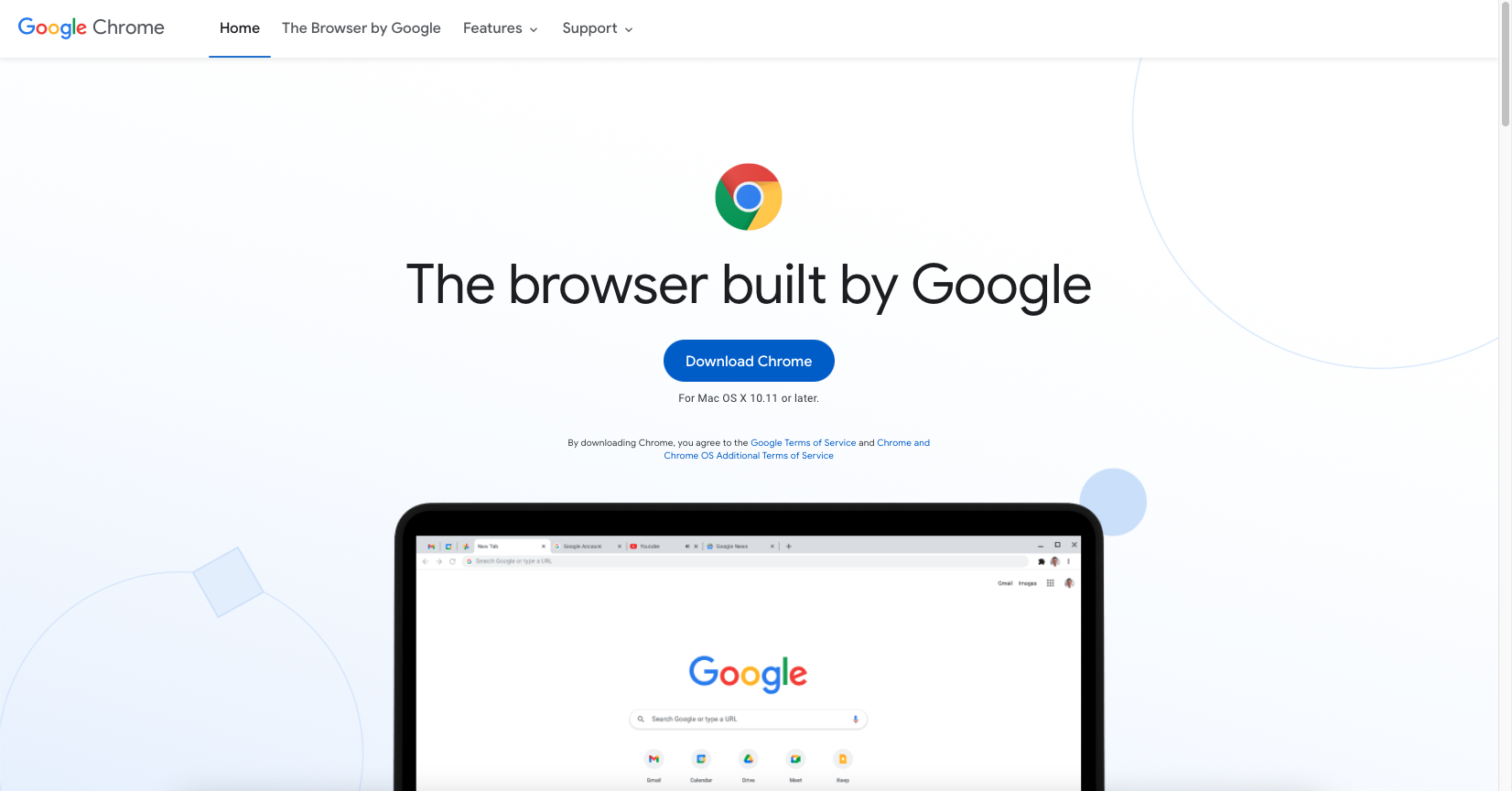
-
Click the Download Chrome button.
-
The Do you want to allow downloads on "www.google.ca"? dialogue box may appear over the main browser window. Click the Allow button should this happen.
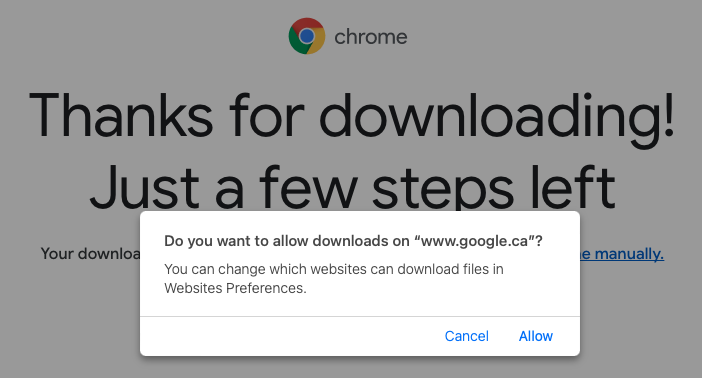
-
Googlechrome.dmg should begin downloading. You can check by clicking your browser's ongoing downloads button (which looks like a downward-pointing arrow) in the upper-right corner of your browser window. You can also see the download's progress this way.

-
Once googlechrome.dmg has finished downloading, double-click the download. See below.

-
Once you double-click the download, a dialogue box will appear. Drag and drop the Google Chrome icon into your Applications folder. See below.
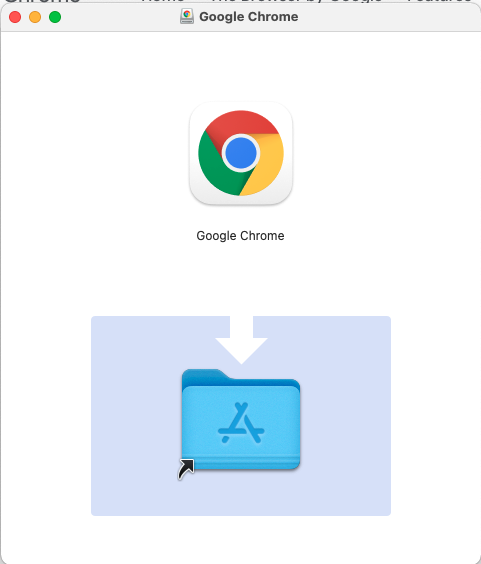
-
Use Finder to search for Google Chrome. Google Chrome will now be in your Applications folder. Double-click Google Chrome's icon to initialize its installation process.

-
A dialogue box will appear and read, "'Google Chrome' is an app downloaded from the internet. Are you sure you want to open it?" Press the Open button and Google Chrome will install on your computer.
-
Now that Google Chrome is installed on your computer, you may refer to the first section of this tutorial (Check If You Already Have Google Chrome) on where to find it and how to open it. Once opened, type the URL of our test into Google Chrome's search box and press enter while the cursor is flashing inside the search box to navigate to the test.
